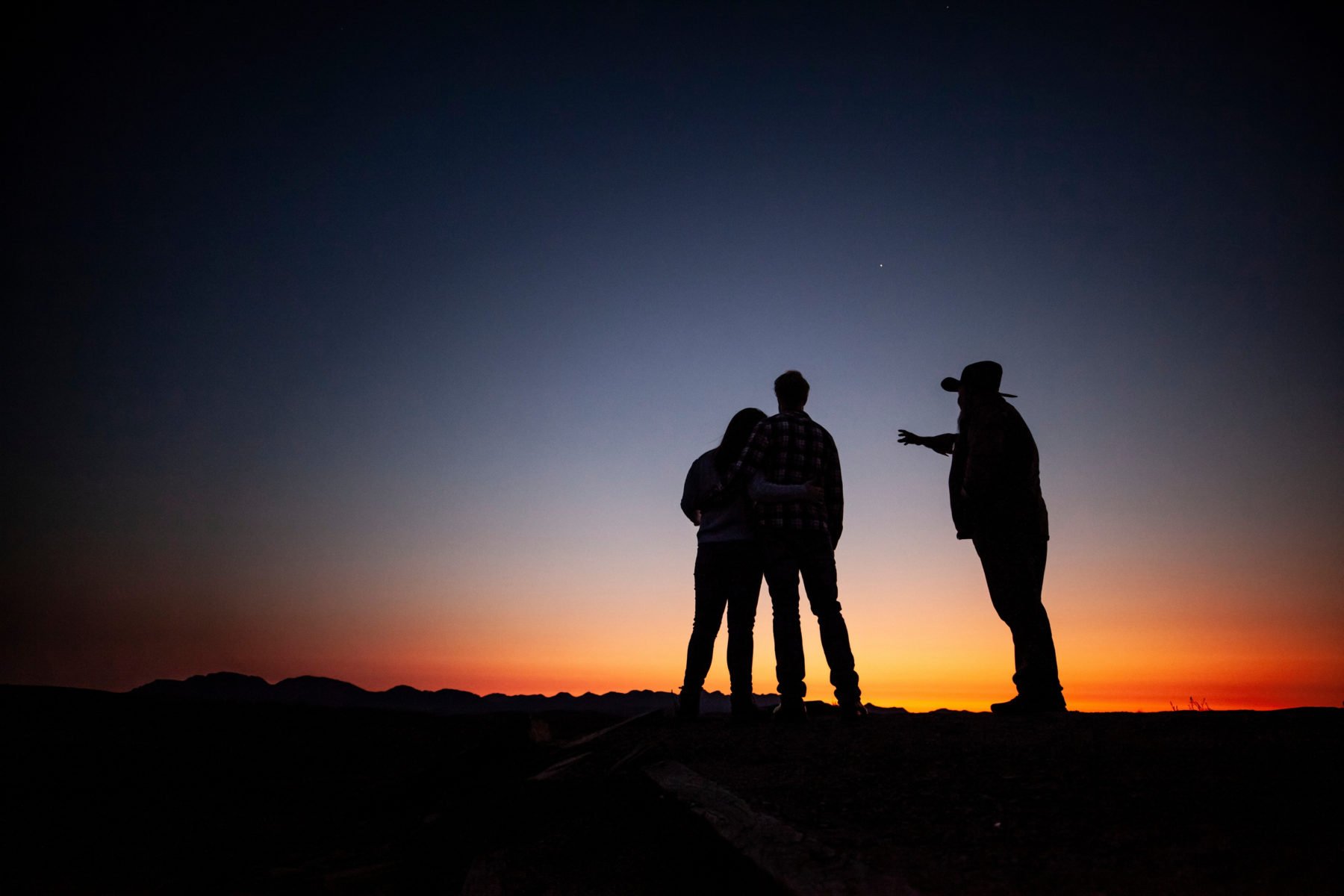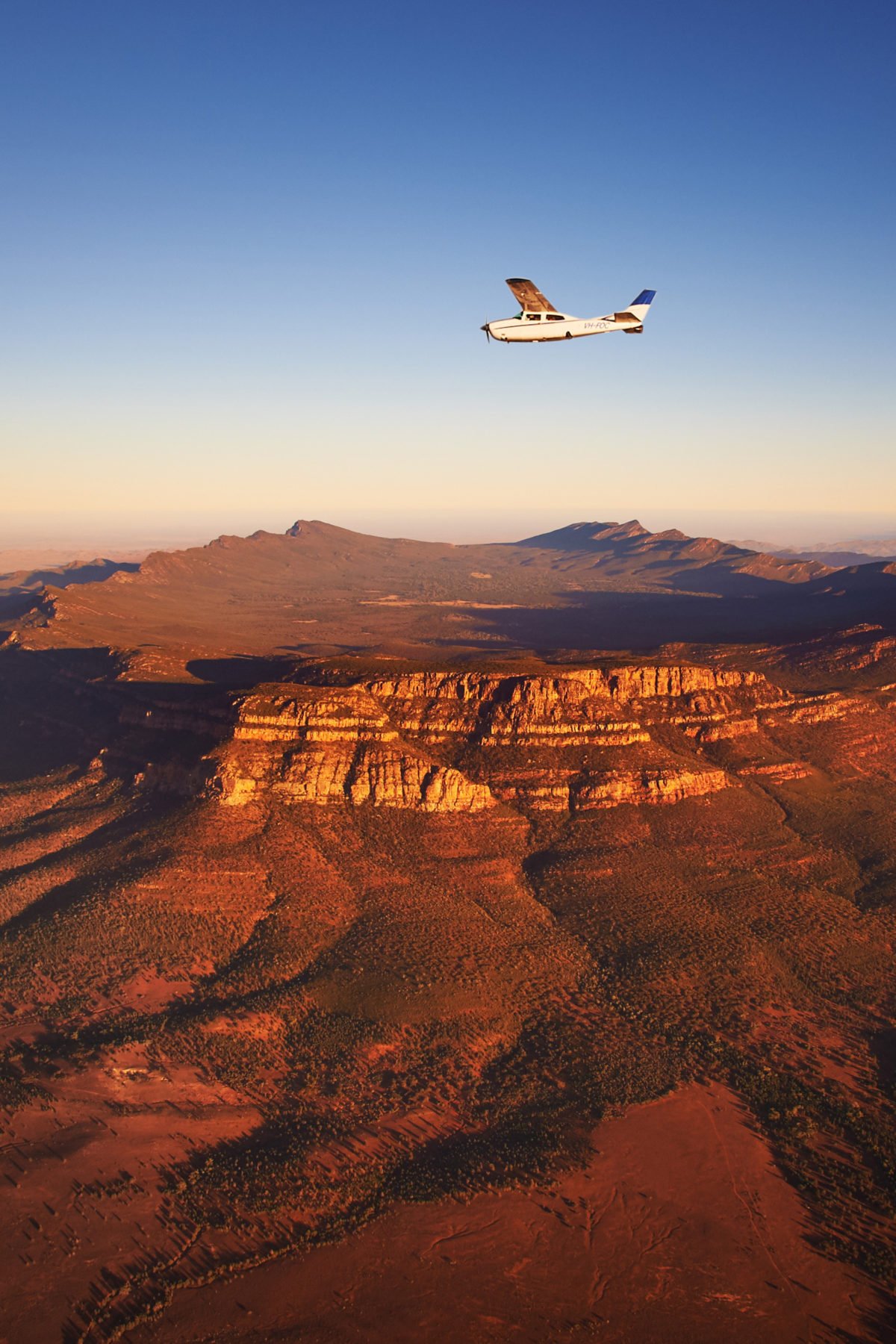Welcome to Wilpena Pound

IT WOULD VIE with such luminaries as Kata Tjuta, the Twelve Apostles and of course Uluru, which, astonishingly, would fit within Wilpena’s walls six times over. But it’s surprising how many Australians have never heard of, let alone visited, this unique geological spectacle in Ikara-Flinders Ranges National Park.
In fact, visitor numbers to the region have fallen since they peaked in the 1970s, but the Flinders Ranges still hold a special place in the hearts of South Australians. Tourists first began coming to Wilpena Pound after it was declared a National Pleasure Resort in 1945. Over subsequent decades, a family camping trip, school excursion or holiday break at The Chalet, now part of Wilpena Pound Resort, became an annual rite of passage for many.
I first set eyes on the Pound back in 1999, when I was organising photos for Australian Geographic’s guide book to the Flinders Ranges. Initially, I thought I was looking at aerial images of a massive meteorite crater. But the origins of this natural amphitheatre were a less violent and much more drawn-out affair.
Geologists describe the feature as a ‘remnant elevated synclinal basin’, and it was once enclosed by far higher mountains. Its steep walls and shallow inner bowl are made of thick layers of super-hard quartzite that have been squeezed along both east–west and north–south axes, forcing the strata upwards and creating the teardrop-shaped 17 x 7km structure. Although time has whittled away several thousand metres from its top, the Pound is the highest section of the Flinders Ranges.
The broader Flinders landscape is the result of uneven weathering of alternately hard and soft sections of rocks, with quartzite forming the high peaks and hogback ridges, while softer materials, such as mudstone, siltstone and shale, have been worn away to form valleys and gorges.
In between the valleys stand limestone hills striped with darker bands of hard dolomite. Iron oxide lends the rocks a pinkish glow in the half-light of dusk or dawn, and the vegetation here emits terpenes – plant compounds that combine with ozone in the atmosphere to give a blueish tinge to distant vistas.

LONG BEFORE EUROPEANS arrived, Wilpena Pound, or Ikara (meeting place), was of profound cultural and spiritual significance to the
Adnyamathanha people, who have inhabited the region for at least 15,000 years. The serpent of their Dreaming stories, Akurra, is creator and guardian of all permanent waterholes in the Flinders and is said to form part of the Pound’s walls.
In 2011 the SA government entered into partnership with the Adnyamathanha (pronounced ad-na-mut-na) traditional owners for the co-management of Flinders Ranges NP. Senior cultural ranger Arthur Coulthard was born under a Flinders river red gum and has worked in the park since the 1980s. He believes the co-management is paying off.
“People have a better understanding now and I thank my people for doing that, otherwise we would be back in the dark ages,” says Arthur. “Visitors to Wilpena have opened their eyes and are really taking on the Aboriginal perspective. This area is a significant place for us Adnyamathanha because it’s a Dreaming story. We don’t just see the beauty of it; it is a part of us.”
More Kara wonders
Sacred Walk
Join an Adnyamathanha Aboriginal guide (right) for a walk into Sacred Canyon in Ikara-Flinders Ranges NP. Learn about the cultural significance of the site and the ancient rock engravings from the perspective of the Adnyamathanha people. Only appropriate community members can share Adnyamathanha stories, and Sacred Canyon is only accessible on an
Adnyamathanha guided tour.
Visit Wilpena Pound.
Wild for flowers
Spring is a spectacular time in the Flinders with yellow-footed rock-wallabies and echidnas regularly spotted at Brachina Gorge in Ikara-Flinders Ranges NP. The warmer weather coaxes a vast array of native plants, of which 533 have been recorded in the region, into bloom. These include many rare and vulnerable species such as the great sun orchid, slender bell-fruit, Menzell’s wattle, nodding chocolate lily, mintbush and the iconic Sturt’s desert pea.
Visit Parks South Australia.

Joy flight
To be truly immersed in this extraordinary landscape, walk into its heart. Try the popular 7.8km Wangara track; it has panoramic views across Wilpena Pound’s interior. Top this off with a scenic flight in order to see it in its eye-popping entirety. These take off regularly from the airstrip near Old Wilpena Station.
Visit Wilpena Pound.
Outback Spirit
Explore the incredible natural amphitheatre of Wilpena Pound with a guide who knows it best to discover its many hidden gems, from native flora and fauna to ancient sandstone engravings.
Visit Outback Spirit.

